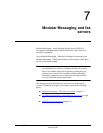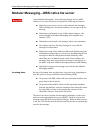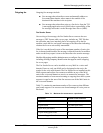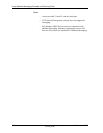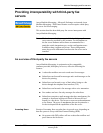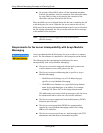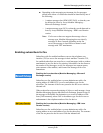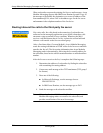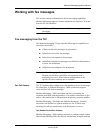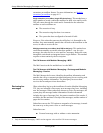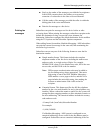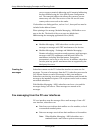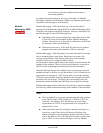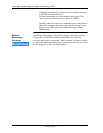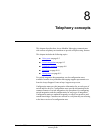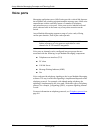
Modular Messaging and fax servers
November 2004
Avaya Modular Messaging Concepts and
Planning Guide
7-9
Working with fax messages
This section contains information on the fax messaging capabilities
Modular Messaging supports, from the telephone user interface (TUI) and
from the PC user interfaces.
Note: H.323-based IP integration currently does not support fax
messaging.
Fax messaging from the TUI
The Modular Messaging TUI provides the following fax capabilities to
subscribers and callers:
! Callers can leave fax messages for subscribers.
! Subscribers can review fax messages
! Subscribers can respond to fax messages
! Subscribers can print fax messages to a default fax destination or
to a new fax destination
! Subscribers can configure a fax destination
Note: Modular Messaging—Exchange and Modular Messaging—
Domino provide these capabilities in conjunction with a
third-party fax server. Some features are dependent on the
specific fax server and may not be available.
Fax Call Answer The TUI enables callers calling from a fax machine to leave fax messages
for subscribers. A Modular Messaging—MSS system also supports
voice-and-fax Call Answer messages.
Modular Messaging—MSS subscribers can have a secondary fax
extension associated with their mailbox. This enables subscribers to give
callers a fax number that is different from the primary extension number.
Modular Messaging—Exchange and Modular Messaging—Domino
subscribers can also have a separate number for fax, in which case,
incoming fax calls are sent directly to the third-party fax server.
Call Answer fax mailbox features
Modular Messaging—MSS enables customers to configure single or dual
Direct Inward Dialing (DID) fax delivery mechanisms, using the multiple



